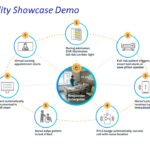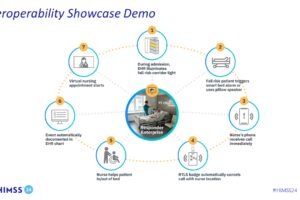The following is a guest article by Deepan Vashi, Executive Vice President and Global Leader at Firstsource
Practical AI Deployments can Enable Health Payers to Improve Efficiencies, Cut Costs, and Improve Stakeholder Experiences
While media pundits speculate on the future of AI, for healthcare payers, AI can be a very practical tool enabling them to increase operational efficiency, cut administrative costs, and improve member experiences. The key to success with today’s AI capabilities is focusing on applications that deliver real returns. Today, that means tackling two of the industry’s biggest costs: claims processing and contact centers. Improving speed, accuracy, and service in those areas will create better provider and member experiences while containing costs.
Here’s a look at where and how to get started with AI-first operations.
AI-First Claims Management
Payers struggle to pay claims on time, resulting in interest payments and penalties that ultimately increase healthcare costs. Accuracy is also an issue, with many payers spending resources recovering overpayments. Issues with claims lead to higher call volumes and increased contact center expenses. Auto adjudication rates are typically only about 80% to 85%, and every percentage point improvement in auto adjudication unlocks significant value.
AI is ready to streamline the claims management process. Health plans are deploying decision agents, numerical and natural language data analyzers, and predictive models in real-time to derive insights from claims and act on them at scale and in sub-seconds. AI tools can identify claims likely to pend as duplicates or to be paid incorrectly and adjusted later. The tools can pick up interest payments and improve the collaboration between functions, providing more efficient, faster, and seamless claim processing. AI-driven models also significantly enhance audit quality by increasing the sample size and focusing on claims with a higher propensity for errors. This is a probabilistic approach rather than the traditional deterministic approach, and it enables payers to scale and apply AI to every claim.
Payers also can apply AI to payment integrity. Most health plans follow retrospective pay-and-chase models to identify inaccurate payments. Reworking, reprocessing, and recovering claims is expensive. AI enables health plans to switch to real-time accurate payments. Moreover, intelligent analytics will help identify unusual claim submission patterns and quickly detect/prevent fraudulent claims. This will drastically reduce operational costs and increase the efficiency of the system. AI tools finding patterns in claims helps minimize their variability, which in turn enables greater automation.
AI-Improved Stakeholder Experiences
Healthcare lags retail, banking, finance, airline, hospitality, and virtually every other industry in terms of intelligent services, streamlined transactions, and consumer satisfaction. AI-infused contact centers and intelligent, automated claims operations can help payers deliver better experiences to members and providers. AI can be deployed to answer queries from members and providers about benefits coverage and claims status inquiries, and even to help members set up appointments with providers.
Large Language Model (LLM) Powered AI Decision Agents
These agents can anticipate member sentiment and emotional cues to deliver appropriate self-service options or route calls directly to an experienced human agent. AI tools can also analyze root causes behind call volumes and help payers redesign upstream processes. AI will help automate processes such as care management enrollment based on insights from member medical records and/or wellness programs, prior authorizations, HRA forms, and call records.
Keys to Success with AI First Operations
Payers should take a holistic approach to developing AI-first operations for optimal results. Virtually every vendor now claims to have AI capabilities or AI-ready products and services. Payers that can evaluate AI platforms and tools in terms of whether they’ll help achieve business objectives can make more effective decisions about which tools to implement.
Here are other important prerequisites to AI success:
Integration with Key Health Plan Systems and Workflows
AI should integrate with the core administrative system or claims engine to drive real value for a health plan. Eventually, AI should also be integrated across CRM systems, other enterprise applications, and different workflows, including utilization management, case management, enrollment, credentialing, etc. Then AI can orchestrate actions across platforms and processes. AI tools need real-time information and context to initiate or prompt useful actions, such as turning conversational insights and signals in the data into actions that drive key business outcomes.
Low Code/No Code Platforms Enable the Democratization of AI-Led Automation
Building and managing AI models is like building and managing the skills of a human knowledge worker. AI agent deployment necessitates collaboration between IT and business stakeholders, access to relevant data, and a suitable platform that empowers subject matter experts beyond just data scientists.
Use Internal Data
Health plans should use their own internal data to create models and their own intellectual property. This will help payers ensure their AI solutions are transparent and the results explainable, two critical factors in ethical AI.
Build on Interoperability Requirements to Scale Data Use
While payers generate terabytes of data at every member touchpoint, they still operate many siloed systems with proprietary data formats. Payers that comply with interoperability regulations and choose open, interoperable systems will get more value from AI tools as they consume, analyze and act on standardized data more efficiently.
Select LLMs Optimized for Healthcare
Accurate results are only one measure of the quality of an LLM. Results from models must be explainable, free from any social bias, and consistently repeatable when using the same or similar prompts. LLMs must have a deep understanding of members’ healthcare contexts to provide personalized recommendations and guide meaningful prompts. Consider models’ IQ and EQ (models with higher EQ will be safer to use) and evaluate different models by the level of detailed and structured prompt engineering required to get the optimal response from each.
Health plans can use AI today to solve current operations challenges. As they do so, they’ll build AI-first operations and a member engagement architecture. They’ll be able to deploy increasingly sophisticated AI solutions on that architecture, such as those emerging with generative AI and tools such as ChatGPT, Google Bard, and others. That said, real business issues must always drive AI deployment, and the early wins will be in claims and contact centers.
 About Deepan Vashi
About Deepan Vashi
Deepan Vashi is an Executive Vice President and Global Leader at Firstsource with over 27 years of experience in health plan IT, business operations, and consulting. He is renowned for his expertise in developing member-centered digital solutions and building cross-functional teams to ensure successful implementation. In his role at Firstsource, he spearheads solutions and strategy for health plans, including Intelligent Back Office, Health Tech Services, and Platform-based Solutions (BPaaS). Deepan is also a fellow of the Academy for Healthcare Management (FAHM) and has extensive knowledge of innovative technologies such as Process Mining, Digital Twin, AI, and Blockchain.













